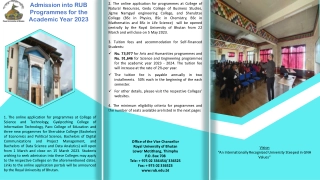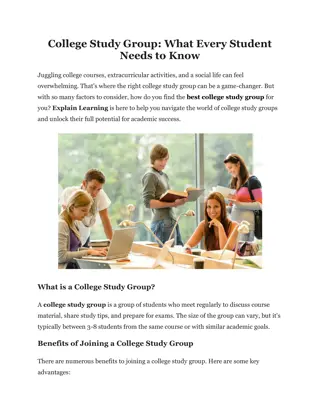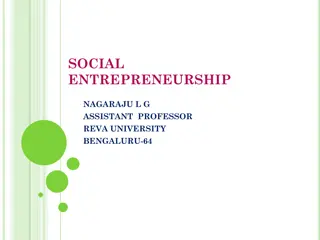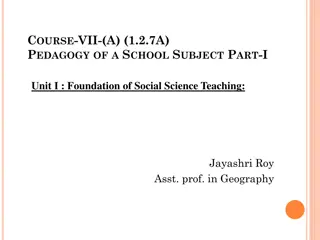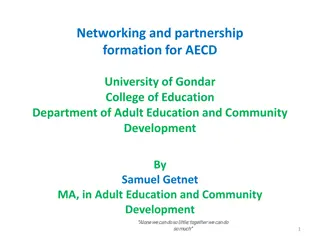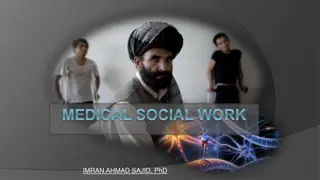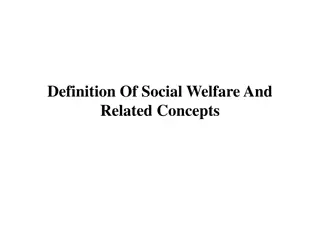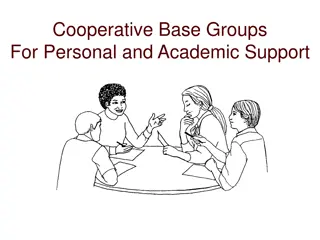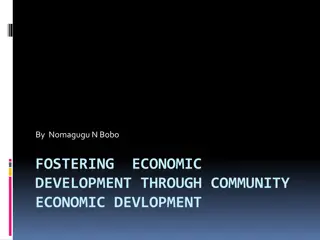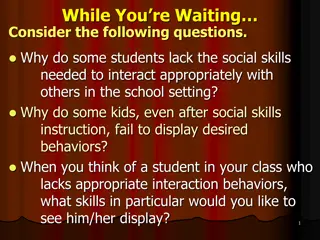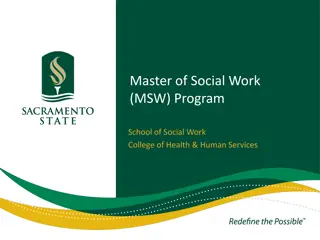Social Interdependence in College
Social interdependence in college involves mutual reliance and support among students, fostering success and a sense of community. Explore the benefits and strategies for effective communication in diverse environments.
Download Presentation

Please find below an Image/Link to download the presentation.
The content on the website is provided AS IS for your information and personal use only. It may not be sold, licensed, or shared on other websites without obtaining consent from the author.If you encounter any issues during the download, it is possible that the publisher has removed the file from their server.
You are allowed to download the files provided on this website for personal or commercial use, subject to the condition that they are used lawfully. All files are the property of their respective owners.
The content on the website is provided AS IS for your information and personal use only. It may not be sold, licensed, or shared on other websites without obtaining consent from the author.
E N D
Presentation Transcript
Social Interaction and Diversity Chapter 7
Activity Take out a piece of paper and something to write with
Diversity Wheel Create a diversity wheel about yourself.
Socializing By the end of this section, you will be able to: Define interdependence Describe benefits of social interaction in college Identify communication strategies for effective communication Identify social conflicts and resolution strategies
Interdependence Interdependence is defined as the mutual reliance, or mutual dependence, between two or more people or groups. In an interdependent relationship, participants may be emotionally, economically, ecologically, and/or morally reliant on and responsible to each other. Who are you reliant on? What are needs from that person(s)
Interdependence in College Interdependence is valuable in college because it contributes to your success as a student. When you feel comfortable with interdependence, for example, you may be more likely to ask a friend to help you with a class project. You may also be more likely to offer that same help to someone else. You may be more inclined to visit a faculty member during office hours. You may be more likely to attend the tutoring center for help with a difficult subject. Perhaps you would visit the career counseling center. Overall, when you have a sense of interdependence, you cultivate support networks for yourself, and you help others, too. Interdependence is a win-win relationship.
Independence vs. Interdependence https://www.youtube.com/watch?v=0NXVSrODHOU
Interdependence Interdependence Struggle Mode Interdependence Success Mode Students in struggle mode maintain a stance of dependence, co-dependence, or perhaps dogged independence, but not interdependence Students in struggle mode may avoid cooperating with others in situations where the common good could be achieved Students in struggle mode may be reluctant to listen compassionately and attempt to understand the perspective of another person Students in success mode develop relationships that support themselves and support other people, too Students in success mode develop networks of friends, family members, professionals, and others as a support team Students in success mode actively and compassionately listen to others as an action of support; they demonstrate care and concern
Benefits of Social Interaction in College Form Deep and Lasting Relationships Develop Good Study Habits Minimize Stress Share Interests Develop Social Skills
Communication Strategies for Effective Interactions Whatever your natural inclinations are, you can learn how to communicate more effectively with others and foster supportive interactions. The doors of change to more effective interactions are threefold: Examine your reservations Engage with others Expand your social circle Chapter 7 Book Link
REFLECTIONS ON SELF-CONFIDENCE Make a list of your positive qualities. Acknowledge your accomplishments, talents, and good nature. Ask your group the following questions to get you started: What have I done in the past year that I am proud of? What is my proudest accomplishment of all time? What unique talents do I have? What do people tend to compliment me for? What positive impact have I had on other people s lives?
Social Networking From tweeting about a football game, to posting an album on Facebook about your spring break, to beefing up your LinkedIn profile before a job hunt, to Instagramming picture of party hijinks, social networking is everywhere in college, and it s likely to stay. when-its-time-to-unplug-10-reasons-why-too-much-social-media-is-bad-for- you/
Diversity and Accessibility What Is Diversity? There are few words in the English language that have more diverse interpretations than diversity. What does diversity mean? Better yet what does diversity mean to you? And what does it mean to your best friend, your teacher, your parents, your religious leader, or the person standing behind you in a grocery store?
Cultural Competence Self-assessment Awareness Checklist Self Awareness Assessment
Surface Diversity and Deep Diversity Surface diversity and deep diversity are categories of personal attributes or differences in attributes that people perceive to exist between people or groups of people. Surface-level diversity refers to differences you can generally observe in others, like ethnicity, race, gender, age, culture, language, disability, etc. You can quickly and easily observe these features in a person. And people often do just that, making subtle judgments at the same time, which can lead to bias or discrimination. For example, if a teacher believes that older students perform better than younger students, she may give slightly higher grades to the older students than the younger students. This bias is based on perception of the attribute of age, which is surface-level diversity.
Surface Diversity and Deep Diversity Deep-level diversity, on the other hand, reflects differences that are less visible, like personality, attitude, beliefs, and values. These attributes are generally communicated verbally and nonverbally, so they are not easily noticeable or measurable. You may not detect deep-level diversity in a classmate, for example, until you get to know him or her, at which point you may find that you are either comfortable with these deeper character levels, or perhaps not. But once you gain this deeper level of awareness, you may focus less on surface diversity. For example: At the beginning of a term, a classmate belonging to a minority ethnic group, whose native language is not English (surface diversity), may be treated differently by fellow classmates in another ethnic group. But as the term gets under way, classmates begin discovering the person s values and beliefs (deep-level diversity), which they find they are comfortable with. The surface-level attributes of language and perhaps skin color become more transparent (less noticeable) as comfort is gained with deep-level attributes. The following video is a quick summary of the differences between surface-level and deep-level diversity. https://youtu.be/4QsF8_IwmXs
Positive Effects of Diversity in an Educational Setting Why does diversity matter in college? It matters because when you are exposed to new ideas, viewpoints, customs, and perspectives which invariably happens when you come in contact with diverse groups of people you expand your frame of reference for understanding the world. Your thinking becomes more open and global. You become comfortable working and interacting with people of all nationalities. You gain a new knowledge base as you learn from people who are different from yourself. You think harder and more creatively. You perceive in new ways, seeing issues and problems from new angles. You can absorb and consider a wider range of options, and your values may be enriched. In short, it contributes to your education.
Consider the following facts about diversity in the United States More than half of all U.S. babies today are people of color, and by 2050 the U.S. will have no clear racial or ethnic majority. As communities of color are tomorrow s leaders, college campuses play a major role in helping prepare these leaders. But in 2009, while 28 percent of Americans older than 25 years of age had a four-year college degree, only 17 percent of African Americans and 13 percent of Hispanics had a four-year degree. More must be done to adequately educate the population and help prepare students to enter the workforce. Today, people of color make up about 36 percent of the workforce (roughly one in three workers). But by 2050, half the workforce (one in two workers) will be a person of color. Again, college campuses can help navigate these changes.[3] All in all, diversity brings richness to relationships on campus and off campus, and it further prepares college students to thrive and work in a multicultural world. Diversity is fast becoming America s middle name.
Accessibility and Diversity on Campus The idea of accessibility is an important force of change on college campuses today. Accessibility is about making education accessible to all, and and it s particularly focused on providing educational support to a diverse group of students, faculty, and staff with disabilities. According to the American with Disabilities Act, you can be considered disabled if you meet one of the following criteria: You have a physical or mental impairment that substantially limits one or more major life activities, such as seeing, hearing, walking, learning, and others. You must have a history of such impairment. Others perceive that you have such impairment.
Accessibility and Diversity on Campus If you meet one of these criteria on the previous slide, you have special legal rights to certain accommodations on your campus. These accommodations may include, but are not limited to, the following: Academic accommodations, like alternate format for print materials, classroom captioning, arranging for priority registration, reducing a course load, substituting one course for another, providing note takers, recording devices, sign language interpreters, a TTY in your dorm room, and equipping school computers with screen-reading, voice recognition, or other adaptive software or hardware. Exam accommodations, like extended time on exams Financial support and assistance Priority access to housing Transportation and access, like Wheelchair-accessible community shuttles
Accessibility and Diversity on Campus Assistive technologies and Web-accessibility accommodations are critical in today s technology-driven economy and society. The following are some examples of assistive technologies are the following: Software like Dragon Naturally Speaking, Kurzweil, Zoom Text, CCTV Magnifier, Inspiration Software Computer input devices, like keyboards, electronic pointing devices, sip-and-puff systems, wands and sticks, joysticks, trackballs, and touch screens Other Web-accessibility aids, like screen readers, screen enlargers, and screen magnifiers, speech recognition or voice recognition programs, and Text-to-Speech (TTS) or speech synthesizers Students in the following video share some of their experiences with the Web accessibility. https://youtu.be/BEFgnYktC7U
Campus and Student Life Student Life Whether your campus is small, tall, grande, or venti, you are probably amazed by the array of institutionally supported student activities available for your enrichment and enjoyment. Perhaps your biggest challenge is deciding how much extra time you have after studying and which added activities yield the greatest reward. In this section of your book are two videos that give a sample of campus life at two different types of colleges. The first is from a large state institution the University of Maryland. The second is from a smaller, private college Baldwin Wallace University. Regardless, though, of where your institution fits on the spectrum of size, or how many activities, clubs, and organizations your institution offers, it s very important for you to be able to explore cocurricular interests for learning, enjoyment, and personal satisfaction. Student life should always be satisfying and rewarding to students, as well as to alumni, faculty, staff, and community members. Together, these groups are an institution s lifeblood.
Organized Groups on Campus Student Organizations Colleges have an abundance of student organizations. Some examples you may be familiar with are the Hillel Student Organization for enriching the lives of Jewish students, the Chess Club, and Model United Nations. Larger institutions may have hundreds of such organizations. Here is the link to San Jacinto College Student Life page. It's great to get involved! https://www.sanjac.edu/campus-life/student-organizations/organizations Generally, an organization is created and run by current students, and it's sponsored by an executive officer, dean, or director of a major academic or operational unit. An organization must also have a mission that's consistent with the mission of the college and sponsor. It might also collect dues from members, but in many cases, membership is free. To link up with a student organization, you may not need to do much more than take stock of your interests. What do you love to do? In a later section, you ll find a list of ways to learn about student organizations at your institution. If you find that your college doesn t have an organization that speaks to your particular interests, you might consider starting one.
Organized Groups on Campus Fraternities and Sororities Fraternities and sororities are social organizations at colleges and universities. The terms "Greek letter organization" ("GLO") and Greek life are often used to describe fraternities and sororities. Generally, you obtain membership while you are an undergraduate, but your membership continues for life. Most Greek organizations have five shared elements: secrecy, single-sex membership, rushing and pledging to select new members, occupancy in a shared residence, and identification with Greek letters. Fraternities and sororities also engage in philanthropic activities, and they often host parties and other events that may be popular across campus.
Organized Groups on Campus Diversity and Multiculturalism Diversity and multiculturalism are indeed critical pursuits not just on college campuses but in communities, businesses, and organizations around the world. If you are interested in expanding and promoting awareness of this issues on campus and further afield, you can seek opportunities at your college for starters. You will likely find informal gatherings, presentations, campus-wide events, individual students and classes focused on creating diverse, multicultural, and inclusive communities. As an example, here is a list of student clubs relating to culture and diversity at San Jacinto College https://www.sanjac.edu/student-services/campus- life/student-groups-organizations/diverse-student-populations.
Organized Groups on Campus Civic Engagement and Leadership Most colleges have many opportunities for you to learn about and prepare for civic engagement and leadership on campus and in the wider community. What is civic engagement? It's your involvement in protecting and promoting a diverse and democratic society and clearly, leadership is an important part of this. Student organizations and activities related to these pursuits may be student government associations, leadership courses and retreats, social change projects, service opportunities, social innovation initiatives, and many others.
Organized Groups on Campus Service and Volunteerism If you are like many new college students, you probably already have experience volunteering. It may have been part of your high school requirements. Or perhaps you engaged in volunteering as part of a faith organization or as part of a community fundraising effort. Any of your volunteering can continue in college, too, as your institution will have many special and meaningful ways to stay involved, work on social problems, and contribute to a better world. Service and volunteer efforts may include philanthropy, activism, social entrepreneurship, advocacy, and direct service.
Organized Groups on Campus Student Activities On any college campus, satellite center, or virtual space, students may be involved in activities around the clock on any given day. These activities may include student organization activities as well as special presentations, meetings, performing arts events, sporting events, intramurals, recreational activities, local community activities, holiday events, commemorative events, and so on. You are heartily encouraged to pursue any interests that enhance your education and enrich your student experience. Your participation can expand your horizons, deepen your interests, and connect you with new people.
Resources for Learning About Campus Organizations It can seem overwhelming to learn about all the activities, events, clubs, organizations, athletics, performing arts, etc. on campus. Sometimes you may need to dig a little, too. The following resources are a good place to start: Your institution s Web site Email Other technology-based support services Social media Bulletin boards Friends Campus offices for social functions Campus offices for academic functions
Benefits of Participating in Student Life How is it that becoming fully involved in student life can have such a positive impact on student satisfaction and academic success? The National Survey of Student Engagement a survey measuring student involvement in academic and cocurricular activities shows that student success is directly linked to student involvement in the institution. In fact, survey results show that the higher the level of student involvement is, the higher student grades are and the more likely students are to reenroll the next semester. All of this seems to translate to satisfaction. The following lists some of the many benefits and rewards that result from active participation in campus and student life. Personal interests are tapped A portfolio of experience develops Fun leads to good feelings Social connections grow: Awareness of diversity expands Self-esteem grows
Chapter 7 Quiz Take the quiz found at the end of each section from chapter 7 in the course online textbook.
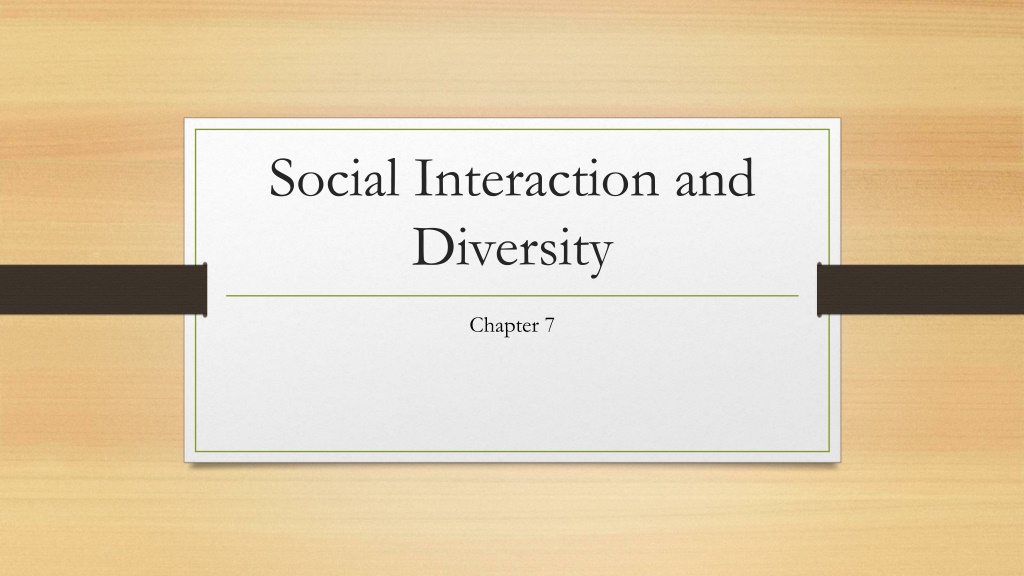
 undefined
undefined






